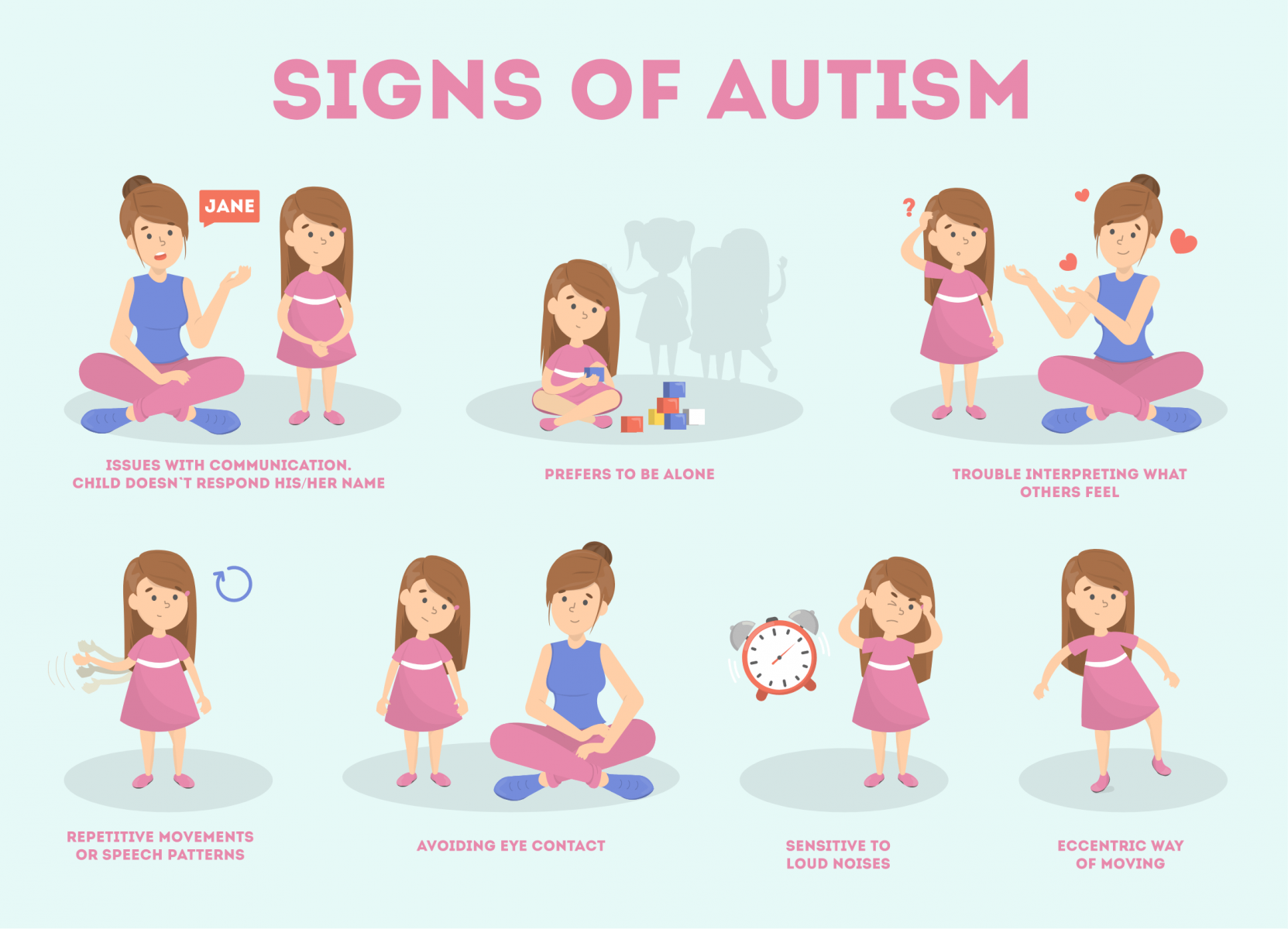Understanding the Range: A Comprehensive Overview to Autism Awareness
Understanding the Range: A Comprehensive Overview to Autism Awareness
Blog Article
Checking Out Autism: Strategies for Efficient Interaction and Interaction
Reliable communication and interaction with individuals on the autism spectrum demand a thorough understanding of their distinct demands and preferences. Methods such as employing clear language, using visual supports, and cultivating regular regimens can considerably improve engagement and lower anxiety. Identifying the importance of non-verbal signs and shared passions paves the means for meaningful connections. Nonetheless, the ins and outs of these approaches disclose additional factors to consider that merit exploration, especially in how they can be adapted to diverse contexts and private experiences. What might these adjustments resemble in practice?
Understanding Autism Range Disorder
Autism Range Condition (ASD) includes a variety of neurodevelopmental problems characterized by obstacles in social interaction, communication, and recurring actions. The term "spectrum" mirrors the varied symptoms and varying degrees of intensity experienced by individuals with ASD. While some may exhibit substantial impairments, others may show high-functioning characteristics, permitting for higher freedom in life.
The onset of ASD generally takes place in early childhood, with signs typically identifiable by age two. Very early signs may consist of delayed speech growth, minimal eye get in touch with, and troubles in comprehending social cues. Although the exact etiology of ASD continues to be unclear, research study recommends a combination of ecological and genetic aspects plays a vital role in its development.
Individuals with ASD typically have unique staminas, such as heightened interest to information and exceptional memory abilities. However, they might fight with comprehending abstract principles and taking care of changes to routine. Because of this, treatments and assistance tailored to private demands are essential for promoting interaction and social skills. Identifying the complexity of ASD is crucial for advertising awareness, acceptance, and effective techniques that assist in significant interactions with people on the range.

Importance of Clear Communication
Efficient communication is vital for fostering understanding and link, specifically for individuals with Autism Spectrum Condition (ASD) Clear communication not just promotes social communications yet likewise improves the individual's capability to reveal their demands, thoughts, and emotions. For people with ASD, the subtleties of language can typically be testing; as a result, making use of unambiguous and simple language is crucial.
Additionally, clear interaction helps in reducing frustration and anxiety that might arise from misconceptions. When messages are shared in a direct and regular fashion, people with ASD are better equipped to analyze details properly, which can considerably improve their social interaction and involvement in different setups.
Establishing regimens and utilizing visual supports can further boost clear interaction. These strategies give people with predictable structures that assist comprehension and retention of info. In addition, actively being and listening patient throughout communications promotes a supportive setting where people with ASD feel valued and comprehended.
Ultimately, focusing on clear communication not just equips people with ASD but additionally fosters even more meaningful links with their peers, caregivers, and the larger neighborhood, leading the way for comprehensive interactions and collaborative connections. - autism
Non-Verbal Interaction Techniques
Communication expands past words, and for people with Autism Range Problem (ASD), non-verbal hints play a significant role in interactions. Non-verbal interaction methods can consist of faces, gestures, body language, and eye contact, all of which work as vital elements for communicating emotions and objectives.
Understanding and interpreting these non-verbal signals can enhance communications with people with ASD. As an example, a cozy smile or open position can create a welcoming ambience, urging involvement. Using aesthetic help-- such as picture cards or icons-- can link communication gaps and assist communicate messages more effectively.
It is additionally essential to be mindful of individual space, as people with ASD may have different convenience levels regarding closeness. Observing their reactions to physical distance can notify appropriate changes.

Producing Supportive Settings
Producing a supportive setting is vital for promoting favorable communications and enhancing the health of individuals with Autism Range Condition (ASD) Such environments can dramatically minimize anxiety and produce a sense of safety and security, allowing people to express themselves extra easily.
To attain this, it is vital to consider sensory level of sensitivities that individuals with ASD might experience. Modifying the physical area to consist of soft illumination, marginal background sound, and comfy seating can develop a calming ambience. Additionally, making use of consistent routines and clear aesthetic schedules can aid individuals expect changes and reduce unpredictability, further promoting convenience.
Social spaces must be structured to minimize overwhelming stimulations while providing chances for involvement in preferred activities. Assisting in locations designated for quiet time can likewise function as a refuge during minutes of stress and anxiety. Importantly, integrating components of selection empowers people, allowing them to work out firm in their environment.
:max_bytes(150000):strip_icc()/autism-coping-4686275-v5-0ebcd414a35a481282d891a9d69d4bb9.png)
Urging Social Interactions
Cultivating social interactions amongst individuals with Autism Range Disorder (ASD) needs intentional methods that prioritize comfort and involvement. Establishing predictable regimens can help in reducing anxiety, making social settings a lot more approachable. Producing organized environments with defined duties and responsibilities allows individuals to involve without the frustrating pressure of unstructured social dynamics.
Including interests and staminas right into social tasks can work as a catalyst for interaction. As an example, arranging group activities around shared pastimes or subjects of attraction can facilitate natural conversations and links. Furthermore, using aesthetic assistances, such as social manuscripts or photographic timetables, can aid in understanding social cues and expectations.
Modeling suitable social habits is critical - autism. Peers and grownups need to show reliable interaction strategies, consisting of energetic listening and turn-taking. Role-playing situations can likewise give a safe area for people to exercise these skills
Lastly, fostering peer relationships through comprehensive techniques is essential. Urging comprehensive playdates or team getaways can develop chances for socialization in a comfortable setting. By implementing these caregivers, instructors and methods can dramatically improve social interactions for people with ASD, advertising their overall social growth and wellness.
Final Thought
Finally, reliable communication and communication techniques are crucial for supporting people with Autism Spectrum Problem. Emphasizing clear language, including non-verbal cues, and developing foreseeable routines dramatically enhance involvement and reduce stress and anxiety. Developing supportive settings fosters risk-free social communications, while encouraging shared rate of interests facilitates significant links. Resources Ultimately, these techniques encourage people with autism to navigate social landscapes, advertising their total well-being and allowing the advancement of long-term relationships.
Effective communication and interaction with individuals on the autism spectrum necessitate an extensive understanding of their distinct requirements and preferences. Clear communication not only helps with social interactions but also enhances the individual's ability to express their emotions, needs, and thoughts.Promoting social interactions among individuals with Autism Range Problem (ASD) needs deliberate techniques that prioritize convenience and involvement. By applying these caregivers, strategies and instructors can considerably boost social communications for individuals with ASD, advertising their general social development and health.
In final thought, over at this website effective interaction and interaction approaches are necessary for supporting people with Autism Spectrum Problem.
Report this page